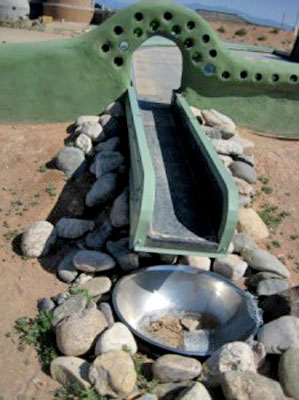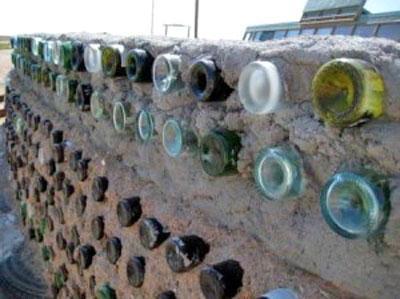|
|
|
If you like the idea of eradicating your
utility bills, not to mention feeling good about living in the most
energy-efficient, self-sustaining way possible, then look no
further.
As their website reasons,
The construction of an Earthship is
based upon the six principles of thermal/solar heating and cooling,
solar and wind electricity, contained sewage treatment, natural and
recycled building materials, water harvesting and food production.
To construct interior walls, a mixture
of sifted dirt, sand, chopped straw and water create an earthen
plaster.
Water is captured on the roof from rain and snow, channeled through silt catches, after which it flows into underground cisterns.
Throughout the course of its life, this water will be recycled four different times for various uses throughout the home. First, gravity feeds the water from the cisterns into a Water Organizing Module which pumps the water into a pressure tank and then filters and cleans it for bathing, washing and consumption.
It is filtered and cleaned again for use in the interior botanical cells to grow plants and food. The third life-cycle is used for flushing the toilet.
Lastly, toilet water is
contained, treated and used again in exterior botanical cells.
Food is grown indoors and outdoors using water that has been filtered from black and gray water. Not only does growing food indoors contribute to cleaner air for residents to breath, but provides the freshest, most local produce possible.
Food can be grown indoors all year round
due to the comfortable temperature maintained by the natural
heating/cooling systems, thus preventing the resident from spending
money unnecessarily on packaged food or other store bought
groceries.
There is no electricity needed for heating and
cooling the home due to the passive solar and thermal mass design.
All household sewage - black and gray water - is contained, used and reused in indoor and outdoor treatment cells.
The sewage treatment provides water for toilet
flushing, landscaping and food production without polluting water
aquifers.
|







